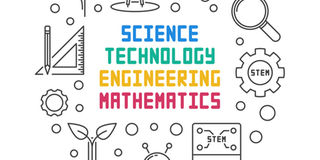Women should embrace ‘steminism’

What you need to know:
- Today in universities/institutions, science programmes such as medicine, physics, engineering, biotechnology are dominated by males while arts/humanities domains like development studies, gender studies, public administration and social works are dominated by girls.
The women’s movement in Uganda accelerated after the promulgation of the 1995 Constitution. It ushered in many reforms, including “affirmative action” aimed at narrowing gender gap in leadership and political space.
All these years, the women’s movement has largely concentrated on advocating for gender equality, women’s rights, fighting gender-based violence, menstrual hygiene and pushing for gender-sensitive legislation and policies.
While this approach brings fresh ideas beneficial to overall status and conditions of women, it does little in bringing most women into the mainstream, technical workforce dominated by men.
It is true that more and more girls are in school and are now able to complete required school cycle, but most of these are in the arts/humanities domain. And this starts at lower secondary school. After lower secondary, most girls choose to pursue arts/humanities subject combinations.
Today in universities/institutions, science programmes such as medicine, physics, engineering, biotechnology are dominated by males while arts/humanities domains like development studies, gender studies, public administration and social works are dominated by girls. Yet, in terms of numbers, we find that the arts/humanities job market is flooded, rendering many young people (most being girls) unemployed.
Resultantly, this state of affairs is widening gender inequality and inhibits the full inclusion of women in the workplace. Remember that remaining unemployed for years works against them in the larger society, as it further entrenches the position of men, increasing dependency on men, which further leads to an increase in gender-based violence.
To counter this trend, efforts should be placed to encourage girls to pursue science programmes at all levels of education--from vocational schools, A-Level to universities.
STEM (Science, Technology, Engineering and Mathematics) education provides a real opportunity for women to grow the feminism movement and narrow gender gaps in all sectors of the economy and life. STEMinism has the potential of taking girls and women to areas where the law and advocacy have not been able to. Moreover, STEMinism also works to equalise the glaring income inequality between women and men in the workplace.
While we can legislate to create affirmative action for political positions, we can not do the same for technical competence. There are positions that require practical, technical skills, (STEM skills) yet only few girls are studying STEM careers. By restricting themselves to the arts/humanities domain, girls begin to enhance another undesirable “inequality” and reverse the gains we have achieved collectively as Ugandans.
My view is that the feminist movement needs to be refocused and reinforced. More efforts should be done to get more women into the workplace (including STEM career pathways) and not having few women into high positions, or just to conform to requirements of the law.
We need many girls and women as painters, carpenters, bricklayers, software developers, graphics designers, welders, technicians, surveyors, electricians and drivers. There are still many jobs that girls have consistently shunned, yet they pay well provided you have the skills to get things done.
A skilled woman, working on equal terms with men will be more respected and an inspiration than a woman who is appointed to a board/position because the law reserves a slot for “women representative.” We should look beyond that.
By pursuing STEMinism, girls will be building bridges and create proportionate equality (gender and income) that works to their own advantage. To achieve this, we have to engage all important stakeholders – girls, teachers, parents, leaders and also boys/men. Remember that girls do not live in isolation.
We accept that feminism has done well to usher in the current gender-friendly legislations and policies and increased the visibility and power of women in public offices. On the other hand, STEMinism will address existing gender gaps in science, technology, engineering and maths careers. If feminism means equality among the genders, then our feminists (like myself) should act fast to fix to gender-imbalance in the STEM careers.
We need to switch from feminism to STEMinism or include STEMinism into feminism (whatever it takes). Only then will women’s movement move on to achieve SDG goal number 8 (decent work and economic growth) and SDG goal number 10 (reduced inequality) so that we have a truly balanced and inclusive Uganda.
After all, empowered women have a greater chance of escaping poverty, leading healthier and more productive lives, and raising the standard of living for their children, families, and communities.
Emmanuel Angoda,




